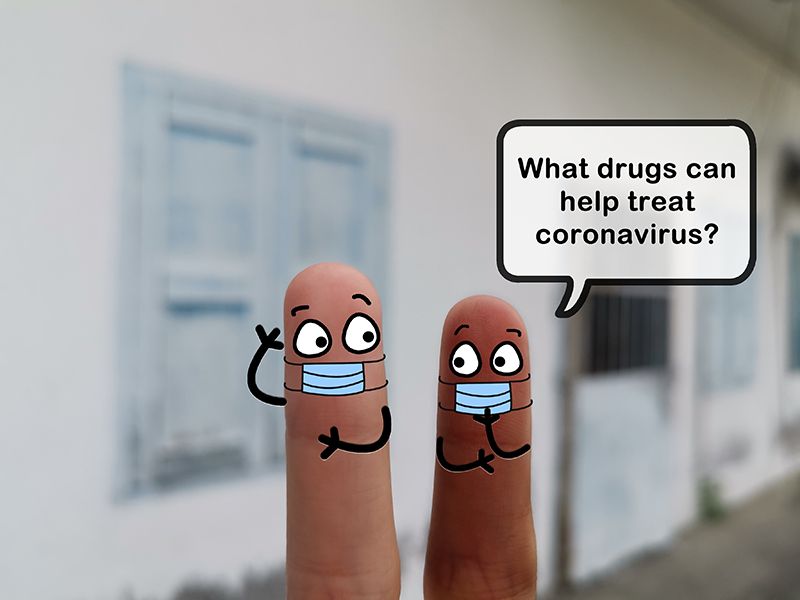Beating the COVID-19 Surge this Winter with Expanded COVID Treatments
The winter holidays are expected to bring with them a surge in symptomatic COVID cases. But treatment is available to mitigate the impact of the illness and prevent its severity, can lead people to test negative sooner, and early evidence suggests that COVID treatment may lower the risk of long COVID.
At a briefing by Ethnic Media Services and California Black Media in partnership with California Department of Public Health, held Dec. 8, physicians and specialists – Dr Rita Nguyen, CA Assistant Health Officer and Director of Population Health, California Department of Public Health; Dr Jasmeet Kaur Bains, Family Medicine, Delano, CA (rural perspective); Dr Wynnelena Canio, Geriatric Medicine, Kaiser Permanente, and Advisor, California Dept. of Aging; Dr Oliver Brooks, Chief Medical Officer, Watts Healthcare; and Dr Daniel Turner-Lloveras, Executive Director, The Latino Coalition for Health Equity (LCHE) – moderated by Regina Brown-Wilson, Executive Director, California Black Media, spoke about the COVID therapeutics available for treating the illness in adults and some teens, and the necessity of accessing treatment early in the illness for it to work.

The CDPH also presented the latest data on ongoing disparities in getting treatment a major in some racial/ethnic and socioeconomic groups.
Dr Nguyen provided an overview about the therapeutics that are currently available and how they can be accessed, what new treatments may be in the pipeline and new data on ongoing disparities in the treatment for some of the racial and ethnic and socioeconomic groups.
“We are in the winter surge and we are already seeing increases in hospitalization rates. For COVID, rates are certainly increasing, especially after the Thanksgiving holidays and we expect even more towards the Christmas holidays, and as we head through December,” said Dr Nguyen.
“What really makes me anxious is that shame of missing this opportunity where we can do something about this surge, that’s never happened in the last three years of this pandemic. This is the first winter surge of a three-year pandemic where we have treatments that are highly effective, readily available, and free to the public, and we know that most folks aren’t accessing it.
“When I reflect in the last three years of this pandemic, early on we didn’t have much, and we were scrambling to get even testing up and running.
“Masking is and continues to be a great preventative measure. We needed to develop testing; we then developed vaccines; that’s an amazing science breakthrough, and now treatments. But folks are understandably COVID-fatigued and have stopped listening after vaccines.
“The treatments are amazing technological advance that we were able to bring to bring forward and now it’s available to people who aren’t hospitalized.
“This is a different surge, as much as people want to tune it out and not pay attention, there’s something different about this one. Although we’ve done this great job of informing people that when you test positive for COVID you should isolate and continue doing it.
“We need to change the narrative that it’s isolate and seek treatment. There’s something else you can do now.
“If you think back to the early 2020, people were desperate for this moment of when one tests positive for COVID-19, there’s something to do about it other than sit tight and hope for the best. Now we can seek treatment.
“Just a reminder to not forget about the rest of the toolbox, especially as we have this early and fast rise in RSV and flu cases, all these respiratory viruses are overwhelming our hospitals.
“Five tips to prevent winter viruses – getting vaccinated, staying up to date with both your flu vaccines and your COVID vaccines; getting treated if you do test positive for COVID or seeking evaluation for treatment; staying home if you’re sick; testing to figure out if it’s even COVID, and if it is, then try to seek treatment; wearing your mask especially in crowded places, especially around young kids who can’t wear masks; washing your hands; and covering your cough or sneeze.
“The COVID-19 treatments are medications that can stop COVID from getting serious. They either come in pill or IV form. A vast majority of folks take the pill, which is much easier, than going for an infusion. They’re free, paid for by the federal government. The pills widely available and they’re highly effective treatment. The key is to take the medication within five to seven days of symptom onset, that means the day you start feeling that runny nose or cough, is when you need to start counting.
“As soon as you start to feel sick, test right away, so that you can then get evaluated for treatment. Don’t wait till the illness gets worse. The whole point of the treatment is to prevent serious illness, hospitalization, and death. If you wait too long, then you might be outside the window of treatment.
“The drugs that are out there today are effective. Paxlovid is the most effective pill in most cases. The other is called Remdesirvir, an IV medication. They are all antivirals so the reasons to get COVID-19 treatments is that they are highly effective in preventing severe illness, hospitalization, and death by up to 50-88 percent.
“Even among those who are vaccinated, it decreases risk by 45-50 percent.
“One of my motivators is early yet growing evidence that treatments may lower the risk of developing long COVID symptoms and ailments that may continue for months, weeks, years, we’re not even sure how long.
“I don’t want brain fog so anything I can do to prevent that I’ll go for it.
“We have plenty of supply. Majority of adults are eligible. Nobody thinks of themselves as ‘high risk.’ The truth is most of us are. Anyone who’s over the year over 12-years-old qualifies. You need to have symptoms of COVID-19 and you must have a positive test, and folks who just seek treatment, they should not roll themselves out.
“Anybody over the age of 50, even if you have no other health conditions, just your age puts you at higher risk. Just the fact that you are unvaccinated puts you at risk, and having common conditions like high blood pressure, diabetes, obesity, being physically inactive, smoking, even if it was past smoking, and the list goes on and on. The point here being, let a clinician help you figure out whether you qualify,” said Dr Nguyen.
“It’s not that straightforward in the American Healthcare System and this is part of the reason why communities of color and low-income communities are having trouble accessing healthcare.
“If you can’t figure out any other way to get to provider quickly then the state has a Telehealth line that can connect you to a same-day provider, who talk to you about whether or not you qualify, and then they can send the prescription to your pharmacy.
“There are websites like sesamecare.com and then also pharmacies like CVS and Walgreens that also have pharmacists that can prescribe. There are state resources to help patients access care as well,” said Dr Nguyen.
Dr Baines, a new state legislature assembly member representing District 35, in Kern County, spoke about increasing health care access, at the same time making sure that communities, especially rural areas of California have increased access to information.
“The biggest problem during COVID-19 was access to information, specifically in rural areas where most patients don’t really have access to information like other more urban areas do. For rural areas it’s mostly what they experience via their doctor or what they hear between each other.
“The problem that we experienced during COVID-19 was the fact that there was an accelerated retirement of physicians and therefore having access to primary care doctors suffered heavily.
“The other problem was the fact that there were a lot of jobs that were lost during COVID-19 due to the economic downtrend and because of that a lot of people lost health insurance, something that impacts rural areas quite big.
“When it comes to rural areas, language accessibility, making sure we have resources in different languages, specifically Spanish and Punjabi, was a major hurdle.
“The third is making sure we have an access supply, especially in rural areas like Kern County. We were the last to get the supplies for the vaccines, the monocle antibody. Rural areas like Kern County are the areas that suffer access to health care,” pointed Dr Bains.
Dr Canio shared how it was different for older adults during COVID. “We have been hearing a rapid drop in deaths from COVID-19. The last year older adults, 65 years, and older account for nearly 90 of the COVID deaths in the United States. That’s nine in ten.
“The vulnerability of older adults of viruses is not new. As we age, we accumulate chronic conditions that cause us to have decreased reserves with which to compensate or recover from stressors such as infection.
“A lot of older adults become frail, losing more muscle mass, and becoming more dependent on others after hospitalization which leads to more disability, and possible institutionalization.
“Unlike one to two years ago, we have more tools now to fight COVID. These include vaccination booster shots. Please get your booster shots. A lot of older adults are not getting them compared to how when it was first rolled out.
“We have rapid test now so we can check right away if we have COVID, and there are antiviral pills. When you test positive for COVID you no longer need to cross your fingers hoping that it doesn’t get serious. COVID-19 treatments are safe, free, and widely available. They prevent COVID-19 from becoming serious,” reiterated Dr Canio.
Dr Brooks spoke about the challenges underserved communities, “Access for the underserved community, quite frankly, is no different, although it just may be more difficult. First and foremost, contact your doctor. Test. That’s crucial, you don’t get to a treatment until you test,” said Dr Brooks.
Dr Lloveras said access is the key word during this pandemic. “If every American, 15 above with COVID received a course of either Paxlovid, or any of the other treatments, daily death would probably fall around 50 instead of the average of 400, where it’s been for the last several months.
“In March of this year researchers at my alma mater, University of Chicago, published a study in journal JAMA Network Open that showed one of the factors consistently associated with the high risk of death due to COVID-19 in the U.S. was the lack of Internet access. This was regardless of other demographic risk factors like socioeconomic status, education, age, disability, rent burden, health insurance coverage, immigration status, estimated that for every additional one percent of residents in a county who have Internet access between 2.4 and 6 deaths per 100,000 could be prevented.
“In California, where you have access to Telehealth regardless of insurance status, that is an amazing program and unfortunately I feel that those who will need it most will not be able to take advantage of it because we’ve forgotten about the most important aspect of Telehealth which is Internet access, devices and digital literacy, and digital skills, because without that you’re offering gas to a family that has no car.
“We need more bilingual, bicultural physicians and care teams that are able to communicate in a clear way so that by the end of the phone call or the end of the visit, everything is clear and the message is understood by both parties; and medications are delivered; medications are taken higher; compliance rates, these are the things I feel that we could do,” said Dr Lloveras.


